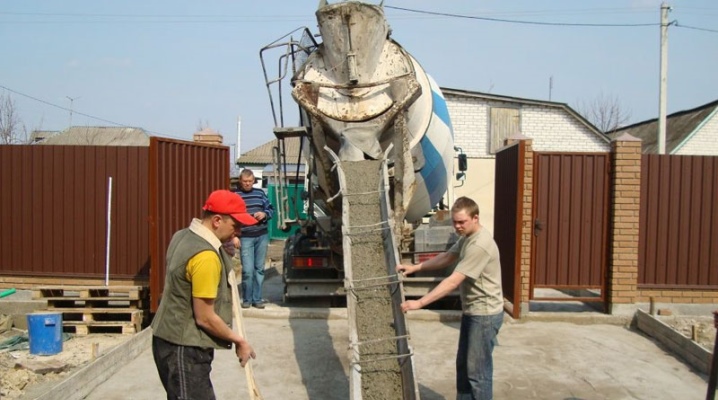M300 concrete
M300 concrete is the most popular and often found brand with extensive scope of application. Due to the density of this material, it is used in the laying of the roadbed and airfield pavements, bridges, foundations and much more.
Concrete is an artificial stone, which consists of water, cement, small and large aggregates. It is hard to imagine a construction without this material. There is a misconception that this material is the same everywhere, has no variations, is identical in characteristics and properties. In fact, it is not. There are many varieties and brands of this product, and in each case you need to choose the appropriate type. This is usually done with the help of the generally accepted property - strength. It is denoted by capital letter M and numerical value. The range of brands starts with M100 and ends with M500.
The composition of this concrete is similar to the marks next to it.
Specifications
- Components - cement, sand, water and crushed stone;
- Proportions: per 1 kg of cement M400 accounted for 1.9 kg. sand and 3.7 kg of rubble. Per 1 kg Cement M500 accounted for 2.4 kg. sand, 4.3 kg. rubble;
- Proportions based on volumes: 1 portion of cement M400, sand - 1.7 portions, gravel - 3.2 portions. Or 1 portion of cement M500, sand - 2.2 portions, crushed stone - 3.7 portions.
- Volume composition on 1 l. cement: 1.7 l. sand and 3.2 l. rubble;
- Class - B22,5;
- On average, from 1 l. cement goes 4.1 liters. concrete;
- The density of the concrete mix - 2415 kg / m3;
- Frost resistance - 300 F;
- Water resistant - 8 W;
- Workability - P2;
- Weight 1 m3 - about 2.4 tons.
Application
Application areas:
- wall construction,
- device of various types of the bases of monolithic type
- can be used for the manufacture of stairs, fill sites.
Manufacturing
Various types of aggregates are used for the manufacture of M300:
- gravel,
- limestone
- granite.
To obtain a mixture of this brand used cement type M400 or M500.
In order to get a high-quality product as a result, it is necessary to strictly observe the technology of mixing the solution, to apply exclusively benign fillers and to adhere very precisely to the specified proportions of all components.
Many amateur builders, seeking to save money or from the principle, do not acquire the prepared concrete mixes, but make them themselves. It is not difficult to manufacture this building material by yourself and does not require special skills.
In all cement solutions, the volume of water is selected as half of the amount of cement. Thus, the portion of water is 0.5.
It is very important to carefully mix the cement solution first, and then the concrete itself to a homogeneous mass. In this case, the prepared product will be high quality and reliable.





















